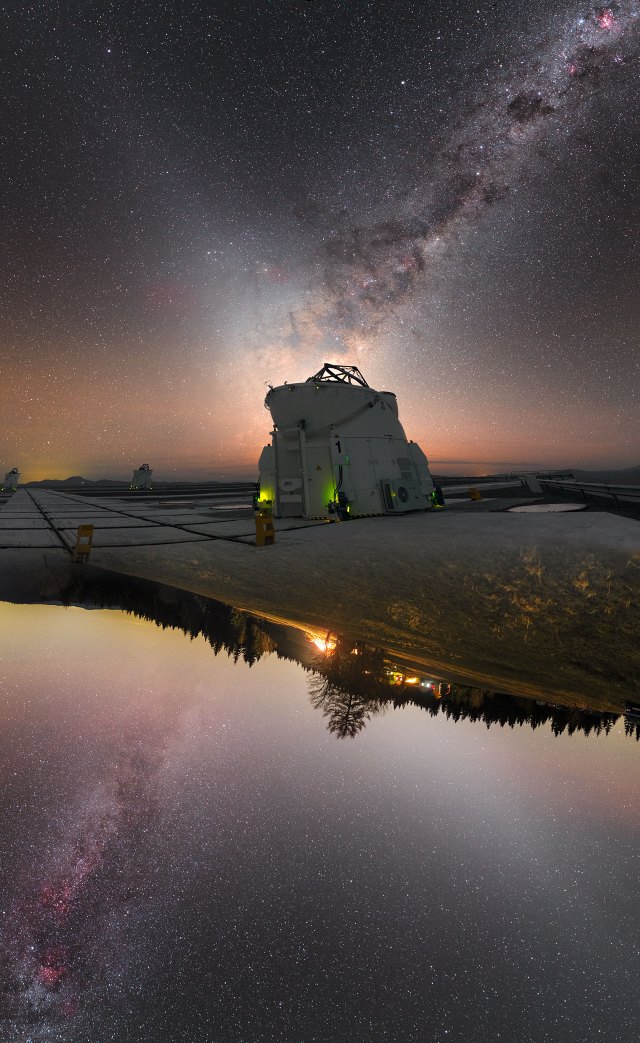Esta imagen es irreal… ¡literalmente! En lugar de ser una sola imagen, fue creada combinando dos fotografías individuales y muestra el cielo de enero visto desde ambos hemisferios, publica la página oficial del Observatorio Europeo Austral (ESO).
El experto es el fotógrafo embajador de ESO Petr Horálek. Petr captó la parte superior de la imagen desde el Observatorio Paranal de ESO, en Chile, y la parte inferior desde el pueblo eslovaco de Oravska Lesna, para luego combinar ambas imágenes y crear esta sorprendente composición.
Uno de los brazos de la distintiva estructura en forma de X, que se extiende desde la parte superior derecha hacia la parte inferior izquierda del marco, es el carril de polvo de la Vía Láctea. En la otra diagonal vemos brillantes columnas de luz zodiacal. En el centro de la imagen, divisamos uno de los cuatro pequeños Telescopios Auxiliares de 1,8 metros que forman parte del VLT (Very Large Telescope) de ESO.
En la parte inferior de la imagen, destaca un llamativo resplandor causado por la contaminación lumínica en Oravska, aunque no hay ninguna característica similar en la parte superior debido a la remota ubicación de Paranal.


